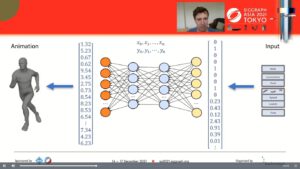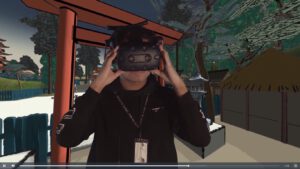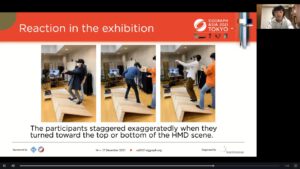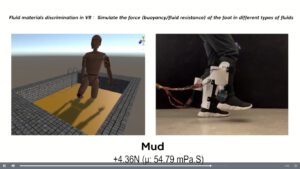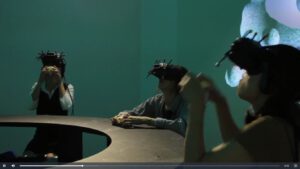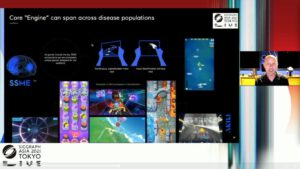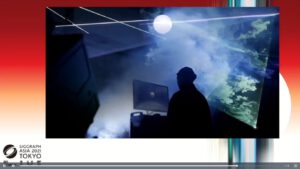This year’s SIGGRAPH Asia took place in Tokyo and online, adding a new program track for games to the scientific and cultural agenda. While the American mother event traditionally focuses heavily on CGI in film and screen productions, the Asian offspring now levels up CGI developments in interactive entertainment and installations.
The Games track started with a historical journey through programming frameworks for game consoles, from the beginnings with Nintendo‘s family entertainment up to the latest PlayStation achievements. The research departments of well established game developer companies, namely SquareEnix, Taito, Ubisoft and Bandai Namco, introduced their latest findings in motion matching for gameplay animation and interaction strategies with responsive AI characters. A keynote on video games for prescriptive medical application opened up a prospective new field of activity for the interactive entertainment industry.
The more seasoned program pillars for art, animation and XR showcased cultural application scenarios. Like the animation shorts in the Electronic Theater, VR installations and learning applications cared a lot about heritage, empathy and intercultural sensitivity. Live animation sessions promoted innovative design tools. The Duel demonstrated workflows for anime production to reconnect Star Wars with the original samurai movies. Sony PCL’s keynote featured their virtual production system, transferring VR’s foveated rendering methods from eye tracking in headsets to in-camera shootings in LED backlighted film sets. Hollywood’s special effect wizards impressed with simulating elemental powers even under pandemic production conditions with a sandy Dune, a watery Foundation and a windy Shang-Chi.
The Emerging Technologies and the Technical Papers also dealt with the mastery of simulating natural forces. The researchers presented very interesting studies and application scenarios for intensified physical experiences in virtual worlds. Fan-operated boots simulated walking environments like land, water, mud or outer space. Real world stage effects triggered tilting rooms in VR. Haptic gloves palpated simulated childbearing conditions. Surreal mixed reality representations of real meals on tracked plates enhanced dietary intakes with multidimensionality.
The most exciting track was the Real-Time Live program with excellent performances of mocap-animated VTubers and their interactively participating chat audience, augmented reality tracking of sport events, convenient anime avatar configurators and even brain interface controlled meditation sessions. All this must have been even more exciting on site in Tokyo, but you could feel the vibes also in the online transmissions. At least, the hybrid event organization allowed Europeans to follow up on-demand, despite the unfortunate time difference to the original stagings in Japan.
SIGGRAPH Asia 2021 opened up new territories for CGI researchers, artists and producers. The newly established game track could become a significant counterweight to movie-oriented animation habits across the Asian Pacific region. This coexistence could already be seen in the different approaches to brain interface applications. The health oriented opening keynote promoted new game markets for medical prescriptions based on the matching between mechanical interaction and apparatus-based therapies. The closing meditation performance transcended intuitive inner worlds into glossily expanding game spaces. Both are debatable, for reducing everything to mechanical supremacy and for using audiovisuals to outplay mental directionality towards relieving emptiness, but both serve as an inspiration, for sure.


